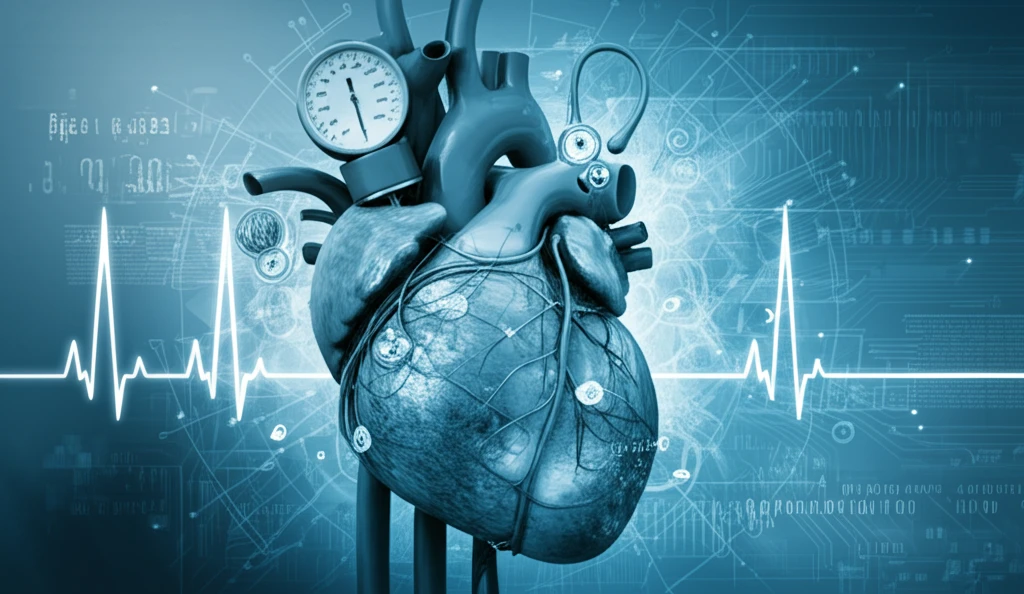
Decoding High Blood Pressure: A Comprehensive Guide to Understanding, Managing, and Treating Hypertension
"Unlock the secrets to controlling hypertension with insights into its causes, symptoms, and the latest treatment options, empowering you to take charge of your heart health."
Hypertension, or high blood pressure, is a major global health concern, affecting an estimated 970 million people worldwide. It significantly increases the risk of heart disease, stroke, and other cardiovascular ailments, leading to substantial morbidity, mortality, and financial strain. Despite advancements in pharmaceutical treatments, a large percentage of individuals struggle to achieve and maintain targeted blood pressure levels, highlighting the need for a more comprehensive and personalized approach to hypertension management.
This article provides a detailed exploration of hypertension, covering its underlying mechanisms, diagnostic methods, and current treatment strategies. We'll delve into the intricate systems involved, from the sympathetic nervous system to the renin-angiotensin-aldosterone system (RAAS), and explore how these systems contribute to the development and progression of high blood pressure.
Understanding the complexities of hypertension is the first step toward effective management. Whether you're newly diagnosed or seeking to optimize your current treatment plan, this guide offers valuable insights and practical advice to help you take control of your blood pressure and improve your overall cardiovascular health.
The Pathophysiology of Hypertension: Unraveling the Mechanisms

Hypertension is broadly classified into two main categories: primary (essential) hypertension and secondary hypertension. Primary hypertension accounts for approximately 95% of cases and typically develops over time due to a combination of genetic and lifestyle factors. Secondary hypertension, on the other hand, is caused by an underlying medical condition, such as renal artery stenosis, chronic kidney disease, sleep apnea, or adrenal disorders.
- Sympathetic Nervous System (SNS): Overactivity of the SNS leads to increased heart rate, vasoconstriction, and fluid retention, all of which contribute to elevated blood pressure.
- Renin-Angiotensin-Aldosterone System (RAAS): This hormonal system regulates blood pressure and fluid balance. Overactivation of the RAAS results in increased sodium and water retention, as well as vasoconstriction.
- Endothelial Dysfunction: The endothelium, the inner lining of blood vessels, plays a vital role in regulating vascular tone. Dysfunction of the endothelium, often due to decreased nitric oxide availability, contributes to vasoconstriction and increased blood pressure.
- Cardiac Output and Peripheral Vascular Resistance: Imbalances in cardiac output (the amount of blood pumped by the heart) and peripheral vascular resistance (the resistance to blood flow in the arteries) can lead to hypertension.
The Path Forward: Comprehensive Management and Prevention
Hypertension is a complex condition influenced by multiple factors. Effective management requires a multifaceted approach that includes lifestyle modifications, medication, and addressing underlying health conditions. By understanding the mechanisms driving hypertension and adopting a proactive approach to your health, you can significantly reduce your risk of cardiovascular complications and improve your overall well-being. Consult with your healthcare provider to develop a personalized plan that meets your unique needs and circumstances.
